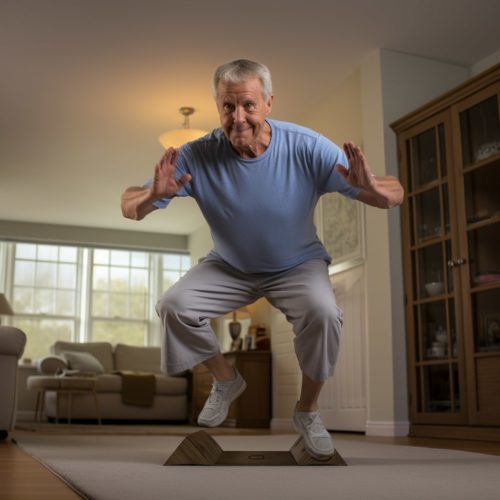Navigating Fall Prevention: Innovative Strategies for Adults
Falls pose a danger to all adults. According to the Centres for Disease Control and Prevention (CDC), a person over the age of 65 years, suffers a fall every second, making it the leading cause of injury-related death among this segment. Furthermore, approximately 20% of falls in adults lead to life-altering changes, mainly a result of broken bones or head injury (Source). Based on these statistics, fall prevention is crucial for all adults, Let’s move beyond the basics and explore ways to enhance your stability and reduce your risk of falls.
Fall Prevention: Exploring Lesser-Known Muscle Groups
While stabilizer muscles like the glutes are well-known for their role in balance, other muscle groups also play a significant part in fall prevention. Focusing on the other muscles such as the deep core muscles and ankle stabilizers, can offer a new dimension to your stability training.
Integrating Mind-Body Techniques in Fall Prevention
Fall prevention isn’t just about physical strength; it’s also about the mind-body connection. Practices like Tai Chi and yoga not only improve physical balance but also enhance mental focus and spatial awareness, key components in preventing falls.
The Role of Nutrition in Fall Prevention
Nutrition significantly influences fall prevention, particularly through the management of malnutrition, sarcopenia, vitamin D deficiency, and hydration levels. A balanced diet enriched with essential nutrients supports bone density and muscle strength, crucial for minimizing fall risks. Focusing on these dietary elements provides a comprehensive strategy for enhancing stability and health, crucial for frail and older adults. For a deeper understanding, please refer to the findings from a recent study available on PubMed.
Technology and Fall Prevention: A Modern Approach
Embracing technology can revolutionize your fall prevention strategy. Wearables that monitor balance and gait, apps that guide through balance-enhancing exercises, and even virtual reality programs offer modern solutions to an age-old problem. For more information, visit the Source.
Fall Prevention: Evaluating Your Living Environment
Your living environment is a critical factor in fall prevention. Simple modifications like brighter lighting, removing tripping hazards, and installing grab bars can significantly reduce the risk of falls in your home. For more information, visit the Source
Self-Assessment Tools: A Proactive Step in Fall Prevention
Utilizing self-assessment tools for balance and stability can provide valuable insights into your fall risk. Regularly performing these assessments can help track your progress and identify areas needing improvement in your fall prevention regimen. For more details, you can visit the National Council on Aging (NCOA)’s Falls Free CheckUp here.
Conclusion: Embrace a Balanced Future
At Alliance Chiropractic, we are dedicated to supporting your musculoskeletal health and wellness. If you’re looking for tailored advice or specific exercises for fall prevention, our doors are open. Contact us today, and let’s work together towards a safe, injury-free future.
For more information, the original article by Matthew Solan can be found at Harvard Health Publishing.

